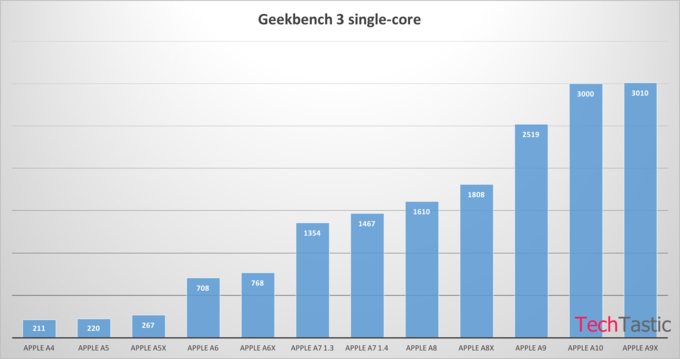iPhone 7’s A10 SoC Appears on Geekbench, Approximately as Fast as A9X

Toggle Dark Mode
When you boil down all we know about Apple’s forthcoming ‘iPhone 7’ so far, it may appear as if there’s very little we’ve yet to out yet. Sure, that dual-lens camera and 3 GB or RAM should be a nice treat; and, not to mention, but that rumored Force Touch home button seems like it’ll go over quite nicely.
“So what’s even left to know at this point, anyways?” you might be wondering. And the answer to that, of course, is quite simple — it’s all about the chipset!
Indeed, when it comes to Apple’s next-generation A-series silicon — which, presumed to be the ‘A10’, is expected to be running the show from under the hood, we currently don’t know much. That’s at least in part because Apple is typically mum about its forthcoming chipset details; but also because, well, it’s just Apple — and as you may know, Apple just doesn’t like divulging “the intricate details” like that.
Sure, the next A-series SoC may be 40% more this or that, or 35% more of the other thing — but, as far as Apple is concerned, that’s all just a bunch of mumbo jumbo, right?
Well, unfortunately for Apple, a chipset’s performance is not just a bunch of numbers plastered on paper for all to see; but rather, how the unit actually holds up under real world usage patterns.
As far as we know, long-time Apple supplier Taiwan Semi-Conductor Manufacturing Corporation (TSMC) will be handling the majority of A10 orders, and the chipsets will accordingly be built around TSMC’s latest 16nm FinFET manufacturing process.
It was originally rumored that TSMC would be switching up its 2016 production of A10 chips according to the company’s all-new 10nm FinFET node. However, it was recently revealed that mass production using the new node would not be ready in time for A10 production this year. And therefore, TSMC will rely on the same manufacturing processes that were employed to produce Apple’s A9 chips.
Even still, though: given the moderate technological advancements that have taken place, year over year, we can still reasonably expect Apple’s ‘A10’ SoC to be somewhat enhanced — especially when it comes to reducing power consumption, over-heating, and boosting performance — over the A9.
So, how exactly does the all-new ‘A10’ stack up?
Well, in a recent leaking of Geekbench performance scores, it was revealed that Apple’s ‘A10’ scored only a smidge lower than Apple’s current top-of-the-pack SoC — the A9X, which currently powers both the 12.9-inch and 9.7-inch iPad Pros. Still, the ‘A10’ appears to trump even the A9 — its previous-generation contender currently employed by the iPhone 6s and 6s Plus— by up to 20% in overall performance.
Interestingly enough, though: even the apparent 20% jump from A9 to A10 is seemingly insignificant — compared, for instance, with the same jump from A8 to A9 the year prior, which resulted in a legitimate 50% boost in performance.
All this considered, while the A10 will certainly be another step forward for Apple — as the company will likely maintain its muscle flexing prowess, it may not be quite the dramatic step forward that most of us were hoping for.
Let’s hope Apple has a solid explanation of its A10 SoC this year, shall we?
What are your thoughts about this somewhat disappointing news? Let us know in the comments!







